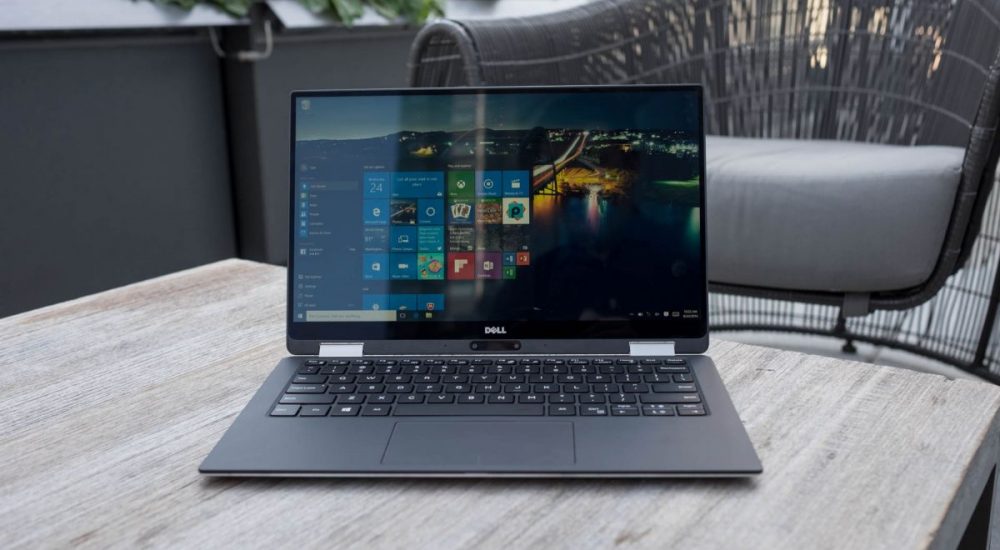Spicing up a leading laptop all over again
OUR EARLY VERDICT
Dell seems to have done it again, turning its winning XPS 13 laptop into a potential leader in the 2-in-1 laptop category with some new features and some holdouts from models past.
FOR
- Beautiful IGZO screen
- Thinner than ever
- Thunderbolt 3 included
- Windows Hello ready
AGAINST
- Webcam position still poor
- Down to microSD slot
For the past few years at CES, we’ve looked to Dell and its ever-evolving XPS 13 as one of the darlings of the show. This year, with Dell’s new XPS 13 2-in-1, the computer maker does not disappoint.
That’s right, Dell has finally created a hybrid version of its leading laptop, and it’s as versatile and beautiful as you’d expect. Coming in the same 11-inch frame providing a 13-inch (diagonal) touchscreen, the XPS 13 2-in-1 brings a new wrinkle to the XPS line without disrupting it.
In other words, Dell will still keep making the traditional version, so don’t worry, purists.

Price and availability
Dell is starting the XPS 13 2-in-1 at $999 (about £810, AU$1,390). That model will come packing an FHD (1,920 x 1,080) touchscreen with a 7th generation (Kaby Lake) Intel Core i5 processor with Intel HD Graphics 615, 4GB of RAM and 128GB of solid-state storage.
From there, you can expect the usual upgrades you’ve seen from the XPS 13 the past few years: an Intel Core i7 processor (still Kaby Lake), a QHD+ (3,200 x 1,800) touchscreen, up to 16GB of memory and as large as a 1TB SSD. However, pricing for those models hasn’t been made clear yet.
Of course, everything will be crystal when the laptop is generally available starting January 5.

Design
Dell’s sense for design has skyrocketed over the past few years, and the XPS 13 2-in-1 is no exception. Keeping the same general ID of the existing XPS devices, this model adds two sturdy hinges made of steel and cased in machined aluminum.
The anodized aluminum lid and carbon fiber palm rest make a welcome return, all within the same 11-inch frame as the preceding model. In short, this is the XPS 13 you already know, but with some subtle yet impactful changes.
Altogether, the device weighs just 2.7 pounds (1.24kg) and measures 0.32 inches (8mm) at its thinnest point and 0.54 inches (13.7mm) at its thickest. All told, that’s a shaving to the tune of 2mm, which is impressive considering the laptop’s 2-in-1 trappings. The device is easily held in one hand, and the light weight makes adjusting between its hybrid modes that much easier.

The palm rest feels as comfy and responsive as ever, as do the glass-covered trackpad and backlit keyboard (with a satisfying 1.3mm of key travel) – all holdouts from the previous models. However, a holdout from the previous design that we wish, well, wouldn’t hold out is the webcam still positioned near the hinge.
While Dell wizened up and centered the infrared-equipped webcam (hello, Windows Hello), it’s still going to show off our lovely double chin during meetings. At the very least, you can orient the device in a tent position so that the webcam faces upright.
The last major feature about the XPS 13 to make it into the 2-in-1 iteration is that beautiful, nearly bezel-free InfinityEdge screen. The returning IGZO panel is notched at either 1080p or QHD+ resolutions, but either way, brings plenty of brightness (400 nits), contrast (1,000:1 ratio) and viewing angles (up to 170 degrees).

Specs and performance
In addition to what you can change about the XPS 13 2-in-1 you might buy before checkout, Dell has loaded this machine with plenty of other goodies. In wired connectivity, you have two USB-C ports (one being Thunderbolt 3, but both can charge), a now-smaller microSD card reader and a 3.5mm headphone jack.
On the wireless front, the XPS 13 2-in-1 comes with the expected 802.11ac Wi-Fi and Bluetooth 4.2 with Miracast and Intel Smart Connect supported.

Now, all of this is powered by what Dell is calling upfront a “lower-power” processor, though both Core i5 and i7 options can reach 3.2GHz and 3.6GHz clock speeds, respectively. That said, Dell has devised a dynamic power management system focused on temperature that should work extra well with a laptop cooler when you need that extra oomph.
That power management should also help keep the 46 Whr battery included powering the whole system for a bit longer. Dell promises up to 15 hours of juice from the FHD version, while the QHD+ flavor will enjoy a still-lengthy 8 hours and 35 minutes – based on its own tests. Of course, we’ll see that for ourselves soon enough.

Early verdict
Dell has once again crafted one of the most impressive laptops of CES, if not the entire year. With the public perception of 2-in-1 laptops far better than it was even a year ago, Dell picked a good time to bring those features to its leading laptop.
The XPS 13 2-in-1 sacrifices almost nothing in achieving its new design, save for a now-smaller microSD card reader and standard barrel connector for power. That said, despite its massive improvements and centering (at last), we’re still not exactly excited about the webcam beneath the screen.
We were thoroughly impressed by the now-hybrid XPS 13 during our short time with it at CES 2017. Dell’s managed to bring a new wrinkle of function and form to its most pleasing product for not much more cash to start than the traditional version. Stay tuned for our full review.
Sourse: techradar.com




































